Had a very interesting day yesterday where we launched 2 balloons with no less than four payloads. Dave Akerman and I had been planning to do a launch in 2 weeks, however permission came through and the weather and predictions all looked good for this weekend so we decided to go for it.
The launch permission was for 2 balloons and having chatted with Dave we decided to do one “pico” (light weight payload) and a second balloon would have a number of payloads on it.
The Pico balloon would run just a tracker (the board that transmits its current location) only with no camera, which seems a bit odd but I wanted to test my super light weight board “picoava” out and have a shot at the world altitude record, powered by 2 AA batteries (it will run on 1 x AAA but we thought we’d give it a little more incase it floated). It was encased in foam and weighed in at 65g :
The second flight was going to be the GoPro Hero 2 equipped µAVA payload. Dave Akerman was working on his “Pi in the Sky” payload which was designed to transmit live images back to the ground during the flight. As this was entirely untested in flight and as µAVA has never flown we agreed it would be prudent to fit a 3rd, backup tracker in the form of the proven BUZZ payload.
On Thursday night the predictions were still looking good for Saturday so we made the call to go for it, with the permission to launch appearing just after lunch time on Friday everything was set. Hell even the weather was looking promising so I drove down to Oxford and stayed over so we could get an early start.
Saturday morning didn’t look promising dense cloud cover and dull. I picked up Nick from north of Oxford who was coming along to learn the ropes/help out. On arrival at Daves we threw together a quick plan of action whilst Julie made us bacon butties + cups of tea (thanks Julie!). We were going to go with the pico payload first so we powered it up and glued the packaging shut only to find it jammed the key on the car so we had to put it in the barbecue to shield the signal to be able to unlock the car :/
As 10am came around the rain started coming down much to our annoyance, however the radar indicated it should pass within the hour which it sort of did. We headed up to the launch site about 10:50 and set up. The drizzle didn’t really stop at any point but we decided to go for it anyway. We aimed for a neck lift of 860g on the balloon which is quite difficult to accurately measure in the wind.
At just before 11:30 everything was ready and we released pAVA into the sky. We checked the spacenear.us/tracker site and within about 2 minutes local listeners had started to pick it up and were updating the location, the ascent rate seemed on track so we set about the next launch.
As the next one had three payloads on we started getting them ready, there was alot of string (in the end the distance from the top of the “train” to the bottom was about 60 meters). All the payloads were functioning and at bang on 13:00 µAVA, Buzz and PIE lurched skywards, it was a really impressive sight :
(Video from Daves YouTube Channel)
For once the predictions of landing weren’t too far away from the launch site so we headed back to Dave’s house to follow the progress :
It was quite exciting as pAVA steadily climbed and entered the top 10 highest flights in the world and carried on going :
Meanwhile PIE was returning some really great live shots via the distributed network of listeners :
Finally as pAVA crossed into the 43km “woo woo” zone (woo woo is a term used to denote we don’t quite understand it!) the ascent rate started to slow down considerably and at 43337 meters just 384meters below the current world record set by XABEN-25 the balloon gave way and it started its return to earth. This currently puts pAVA the 4th highest amateur payload in the world.
Turning our attention back to the µAVA, PIE, BUZZ train it began to approach the predicted burst altitude of 34km, which it went through and carried on going. Someone forgot to tell this balloon it was meant to burst as it carried on climbing until eventually at a quite unbelievable height of 39994 meters (unbelievable for a 1200g balloon with 1kg of payload on it) the balloon finally gave way to the forces placed on it and our payloads began their descent back to earth.
The burst and initial decent were extremely violent with some serious vibrations going through the payloads :
Note Buzz flying past the camera :
Finally at 15:36 the payloads touched down on the edge of Milton United football clubs field :
Recovery was fairly swift as the pink parachute stuck out like a sore thumb on the football pitch :
That would have been an extremely successful day, first Raspberry Pi in “space” (no where near space but lets not get technical here), some misting on the GoPro but otherwise all payloads worked as intended.
We turned our attention back to pAVA which for some bizzare reason was coming down at an extremely slow rate. Normally the payloads descend at 5m/s (double that at 10km) yet at 20km pAVA was doing 2m/s descent. It was a very light payload but that was lower than expected.
We sat about in the nice, now sunny, afternoon as pAVA made its slow way down, the predictions had it landing not too far from Nicks house so we headed up that way. Suddenly just above the ground the descent rate increased and the payload disappeared from our radios.
Using the Yagi antennas to direction find it we could hear it but not decode it. We moved a little close to a local high point before the Yagi pulled a decodable signal in. The payload was in a field on the other side of the A34 :
With seemingly no access to the field and with the rain rolling in I decided to call it a day and headed off back up North. However Dave had other ideas and had noticed a small layby just next to the field. Ignoring the fact it was raining very heavily and the field was full of human height triffids he made two attempts to locate the payload. On the second attempt he found the cord and followed it to the payload :
Probably a little beyond the call of duty but with all four payloads recovered a great days HABing was had by all. Dave’s Pi in the Sky payload (which I’m sure will be written up shortly on his site) was a great success, interestingly those who think you need hand warmers in payloads think again, the Pi payload was incredibly hot, some of the plastic packaging had actually melted and the whole thing smelt of burnt electronics.
Obviously I’d like to say a big thanks to both Dave and Julie for letting me come down and launch with them, to Nick for coming along and helping and of course all the members of UKHAS who come out to help track these flights without whom this would be extremely hard / impossible.
Some pictures :
Just after launch note Dave and I in the field (Click for larger)
This shows the burst note the parachute top right (click for larger).
Even stills from a GoPro HD are pretty impressive (Click for larger)
Edit :
Inflation stop motion video here : http://www.youtube.com/watch?v=gloJM3O2DNo&feature=plcp
Recovery video here : http://www.youtube.com/watch?v=Ui_wejYGVu0&feature=plcp
Daves excellent write up here : http://www.daveakerman.com/?p=592


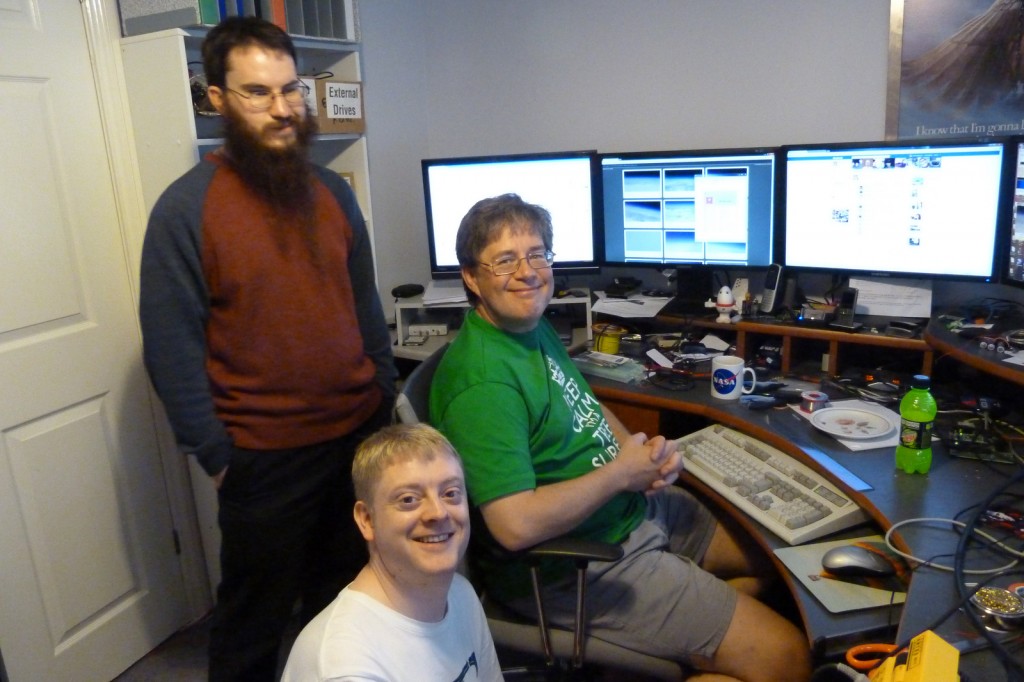
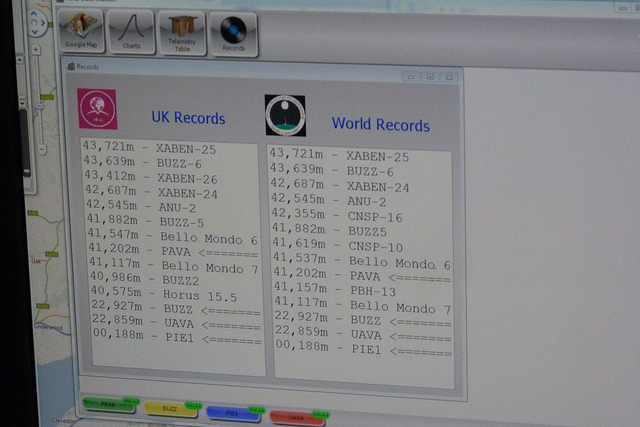

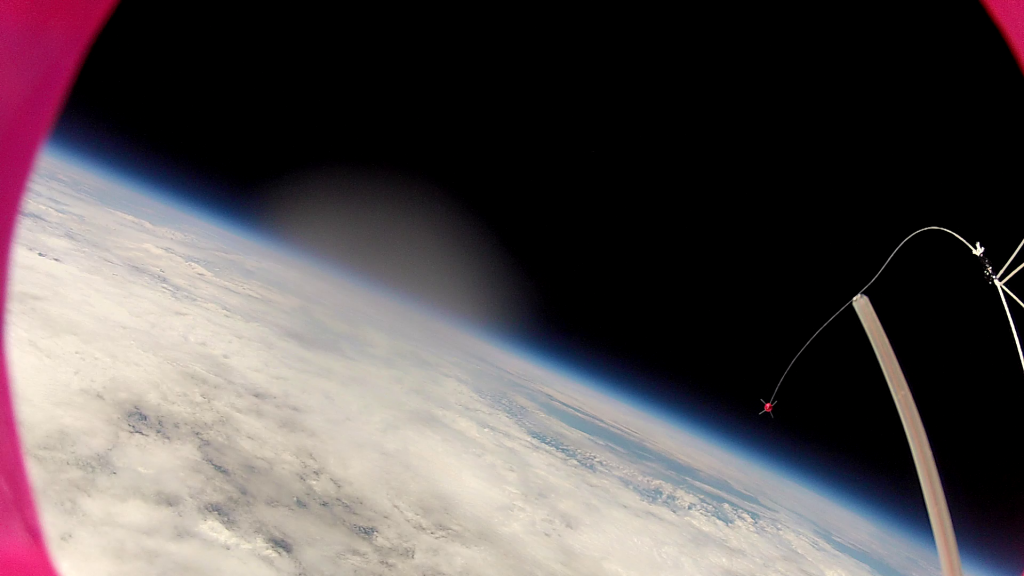

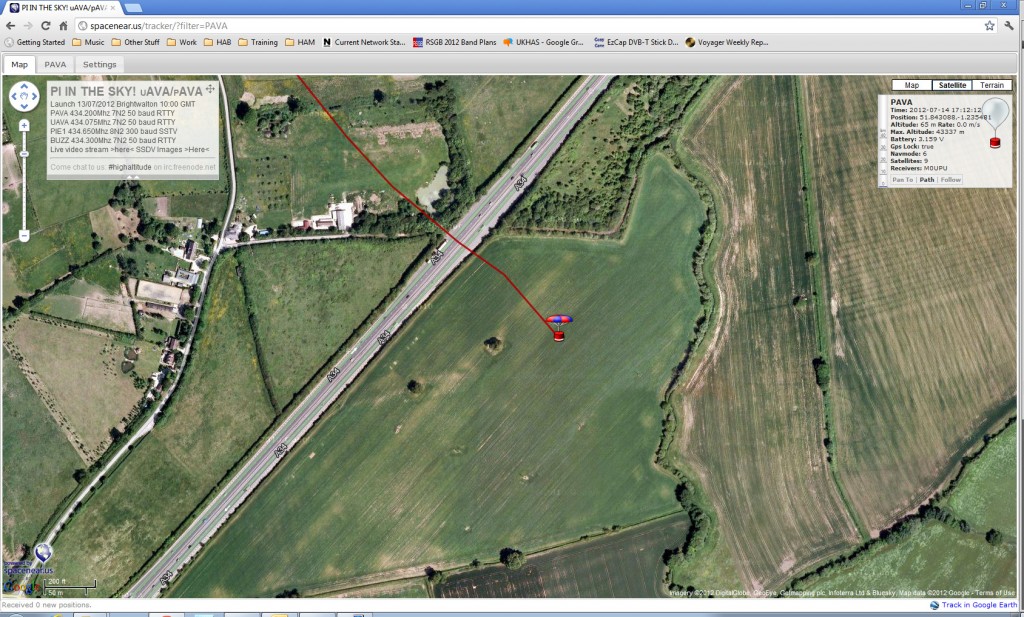

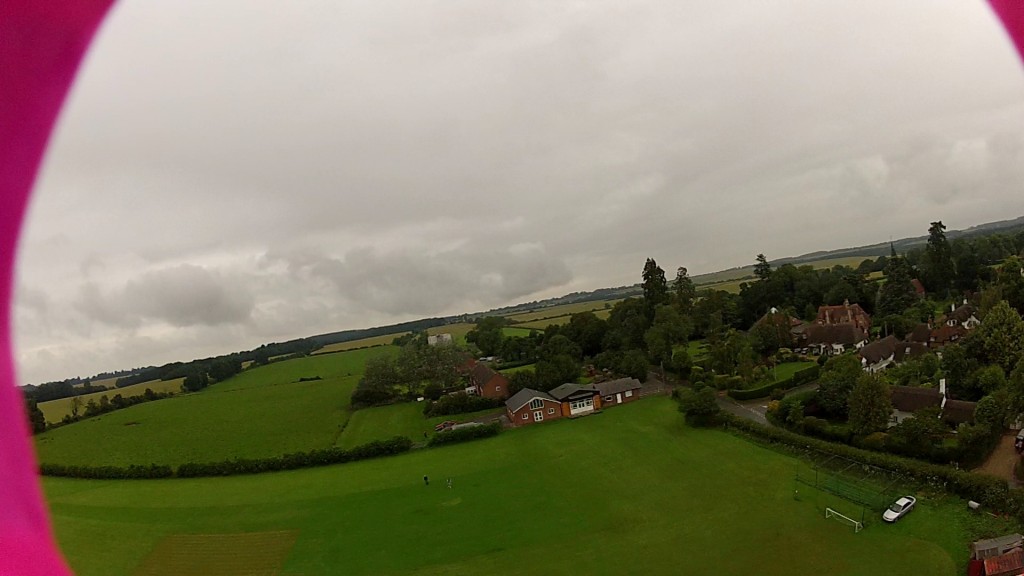
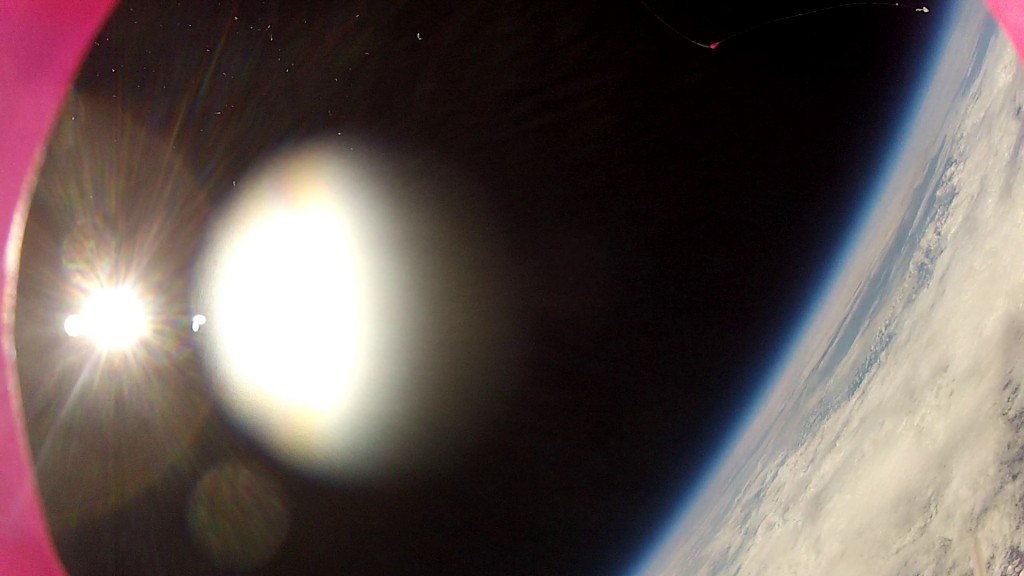

Brill video and excellent photos! Worth all the hard work!
Not sure about getting soaking wet and mucky to pick up a bit of pink foam and some torn latex though 😉
As the one who got soaking wet retrieving it, I’m not so sure either!
This is so amazing
May I ask a simple question?
If the Pi reaches nearly 40Km in altitude, how come the expected & actual flight path for the balloon does not lead to the Pi landing in the Atlantic or Europe?
The balloons follow the atmospheric winds which do change both speed and direction at altitude. If you have a look at uAVA Track you will see as it climbs it changes direction quite drastically and it mirrors this on the way back down. The winds are unlikley to be so quick as to take the payload out over Europe/Atlantic in the short time we are up there.
Thanks to the team at CUSF we are also able to predict these paths with a reasonable accuracy in advance to ensure we don’t land anywhere daft.
In the US we can’t fly in those cloudy conditions. Luckily, I live in the desert, and clear skies are the norm.
We are looking into a GPS that works at altitude… are you willing to sell those little GPS modules? Are they ready for release?
We are looking into logging position, for sure, RaspPI or Arduino,and possibly attaching this to packet radio or the US position broadcast system (don’t recall the name, I’m not the radio guy APRM radio?) The only commercial small board for that chip I see is USB, which is fine for RaspPi, but not convenient for Arduino or other uControllers.
Thought I recognised the name and face 🙂 Picked up the story on the BBC website, interesting stuff.
Cheers
Jason
Hi Aaron,
Thanks for your interest.
The GPS modules are for sale and instock here :
http://ava.upuaut.net/store
Cheers,
Anthony
Afternoon Jason,
From Teesside ? 🙂 Long time no see. Yeah actually using some of my degree finally!
Anthony